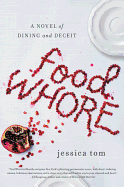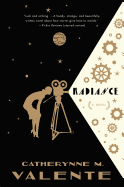_(Medium).jpg) |
| photo: Dustin Coates |
Kate Gavino moved to New York City seven years ago to attend the Pratt Institute, where she studied Creative Writing. After graduating, she worked in publishing, and began to attend author readings regularly. In 2013, she started Lastnightsreading.tumblr.com, where she began posting the illustrated chronicles of her bookstore adventures; she has now compiled them into Last Night's Reading: Illustrated Encounters with Extraordinary Authors (Penguin Books, $16 paperback). When not busy writing, drawing and attending readings, Gavino works for the Brooklyn Public Library.
Did you have any goals for the Last Night's Reading blog when you first started it? Are you surprised that it's come this far?
I didn't have many expectations when I started the blog. One of the main reasons I started it was to get over my fear of posting my art publicly. Because I went to art school but also studied creative writing, I had always considered myself a writer before an artist but I had always drawn, too. This my way of practicing my drawing, as well as just showing my love for the authors I was seeing. But I didn't have any goals beyond that. I definitely never thought about turning my blog into a book, but after it started becoming more popular, someone at Penguin reached out to me and asked me if I would consider it. And I was fortunate enough to work with an editor who really gave me free rein to do whatever I wanted with the book. So I was able to turn it into kind of a narrative about why I go to readings, why I love bookstores so much--that was a lot of fun. Something I'd never really expected!
Many book lovers seek out readings by favorite authors, but your passion for them is clearly beyond that. How did you become someone who has been to so many author readings that you've now published a book about it?
I've gone to readings regularly since I moved to New York. After graduating from Pratt, I worked in trade publishing for a few years, and while I was doing that I obviously went to a lot of readings. They're usually free, and there were a lot of authors I loved, and I would just sit in the back and doodle pictures. After I finish a book I love, I have a habit of gobbling up every review and interview about it I can find, and seeing an author in person is an extension of that. It adds another dimension to the solitary reading experience--being in a bookstore with a group of like-minded readers. So many authors come to New York, which is how I've ended up going to so many. By now, it's like a ritual: I'm familiar with all the bookstores, I have my favorite places to sit, I see a lot of the same people in the audience. It's comforting.
.jpg) Are you going to do readings for Last Night's Reading?
Are you going to do readings for Last Night's Reading?
Yeah, they have a book tour planned for me. I'm quite excited!
What are your criteria for choosing a reading to attend?
I go to readings of authors I've read, but I also check out new ones who interest me. I read pretty widely, so I'm also fascinated by specific subsets of readers. Romance readers always have great wine or champagne; Stephen King fans have prolific knowledge of his entire body of work; and I love the infectious enthusiasm of sci-fi and YA fans.
Do you consider yourself part of any particular fandom? Is there a group of readers who are really "your people?"
I can't think of any fandom in particular that I really see myself as a part of, but I do read widely, so I can find my own part in a lot of the groups I mentioned. I think that's why I love readings so much--I can always find something that interests me.
I take notes and sketch throughout the reading, and I often record longer events on my phone in case I miss anything. I draw the final portrait when I get home, after I've looked over all my notes and doodles from the night.
Tumblr has many fandom communities, which tend to be slightly younger, and you have a quote from Neil Gaiman--a big deal to that audience. Have you had much interaction with that world directly?
There's a lot of crossover between fandom and YA, so the YA authors I post usually get a pretty big response, like John Green and Rainbow Rowell.
Do you think the YA culture is changing the makeup of literary audiences?
I think there've always been individual authors who have a huge audience, but I think it's changed the way that people interact about the books they love. Tumblr is such a great place to find people who like the same books that you do, in a way that you couldn't before the Internet. It builds a super strong sense of community that may not have existed before, which I think is important to building all the enthusiasm for books and authors.
.jpg) How do you feel about the idea of authors as celebrities? Do you feel there is a fundamental difference between a high-profile writer and, say, a famous musician or actor?
How do you feel about the idea of authors as celebrities? Do you feel there is a fundamental difference between a high-profile writer and, say, a famous musician or actor?
In a way, I started my blog because I see authors as celebrities. I'd freak out more over seeing Donna Tartt than a movie star. But most writers, even particularly famous ones, do get to keep a sense of anonymity, which is important for being a good observer. I've been to great readings by authors who are charismatic extroverts or low-key introverts, but the thing they all seem to have in common is that they're perceptive observers.
Readings can be anything from hundreds of people packed into a major theater to an audience of two awkwardly drinking cheap wine in folding chairs. Do you have a favorite place to attend readings? A favorite type of author event?
I like independent bookstores because you can always see how much thought goes into these events, from the authors they choose to the arrangement of the chairs to the artful stacking of books. I consider bookstores my second home.
Has an author ever totally surprised you? Was there anyone who turned out to be completely unlike the version of them you had in your head?
I don't read a ton of poetry, but I occasionally see poets who I've heard of before or who seem interesting. I never fully appreciated the form until I started going to readings regularly and heard poetry read out loud. The past few readings I can recall that have deeply affected me have all been by poets: Elizabeth Alexander, Tracy K. Smith and Rita Dove.
When can we expect the next Kate Gavino book, and will it be more of the same?
I've been very busy working on promotional stuff now that the book is finished, but I am working on a graphic novel right now. It's still in the very early stages. --Emma Page
Kate Gavino: Bookstores Are a Second Home
 Battle Diary: The 243rd Field Artillery Battalion in World War Two by Frank Smith was self-published in 1946, and a copy sent to everyone in the battalion. It is really no more than an edited version of daily after action reports, though I've read and re-read it over the years. My father didn't talk about his war, but in Battle Diary I follow his shadow as he moves across France to the Rhine.
Battle Diary: The 243rd Field Artillery Battalion in World War Two by Frank Smith was self-published in 1946, and a copy sent to everyone in the battalion. It is really no more than an edited version of daily after action reports, though I've read and re-read it over the years. My father didn't talk about his war, but in Battle Diary I follow his shadow as he moves across France to the Rhine.  In this brief piece, I've consciously resisted the temptation to cobble together a Veterans Day reading list--too many vets, too many wars, too many books. I will, however, end by recommending just a few titles that have resonated with me in recent years: Matterhorn by Karl Marlantes; After the Flag Has Been Folded by Karen Spears Zacharias; Brian Turner's memoir My Life as a Foreign Country and poetry collection Here, Bullet; Those Who Remain by Ruth W. Crocker and David Abrams's Fobbit.
In this brief piece, I've consciously resisted the temptation to cobble together a Veterans Day reading list--too many vets, too many wars, too many books. I will, however, end by recommending just a few titles that have resonated with me in recent years: Matterhorn by Karl Marlantes; After the Flag Has Been Folded by Karen Spears Zacharias; Brian Turner's memoir My Life as a Foreign Country and poetry collection Here, Bullet; Those Who Remain by Ruth W. Crocker and David Abrams's Fobbit. 


_(Medium).jpg)
.jpg) Are you going to do readings for Last Night's Reading?
Are you going to do readings for Last Night's Reading? .jpg) How do you feel about the idea of authors as celebrities? Do you feel there is a fundamental difference between a high-profile writer and, say, a famous musician or actor?
How do you feel about the idea of authors as celebrities? Do you feel there is a fundamental difference between a high-profile writer and, say, a famous musician or actor?











